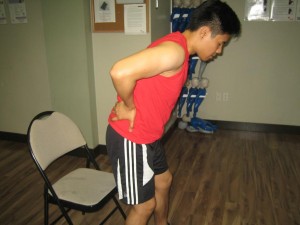A spinal synovial cyst is simply a sac that contains fluid that forms in the coating of the facet joint. It is believed that the synovial cysts are linked to osteoarthritis or other degenerative variations that forms in the joint.
Generally, with deterioration, the facet joint cartilage erodes. In this process, the joint lining might pouch out and a cyst forms.
Where do the cysts form?
A synovial cyst is named on the site where they form. The cysts can form on one side of the spine or both and might occur only on one spinal segment or at several levels.
The usual site where the spinal cysts form is in the low back, at the L4-L5 segment.
Why it is an issue of concern?

Even though uncommon, a synovial cyst might be an indication or in some way linked to painful conditions such as spinal stenosis, degenerative disc disease or even cauda equina syndrome.
What are the signs?
In case a spinal cyst presses or crushes on the spinal nerve root in the area, the individual is likely to experience signs of radiculopathy. Other indications of a spinal synovial cyst include neurological claudication, low back pain and signs of cauda equina.
The seriousness of the symptoms is usually based on the size and site of the cyst.
Management of a synovial cyst
Some cysts stay small and only have a few symptoms. Aside from regular monitoring, treatment is not needed. The cysts are typically diagnosed with an MRI.
In case a synovial cyst triggers significant pain and surgery is too risky, the doctor might recommend a corticosteroid injection or aspiration of the cyst. If there is significant pain or discomfort from the cyst, the doctor might suggest back surgery if the condition of the individual allows.
